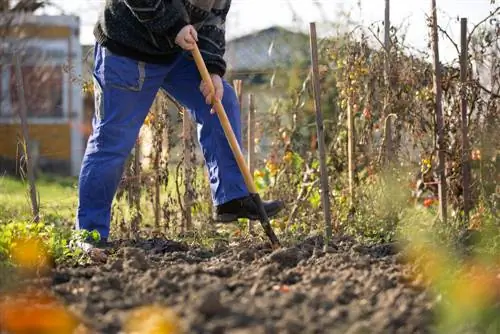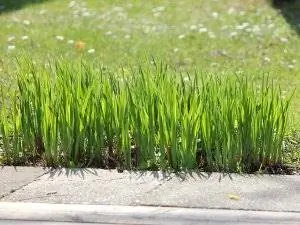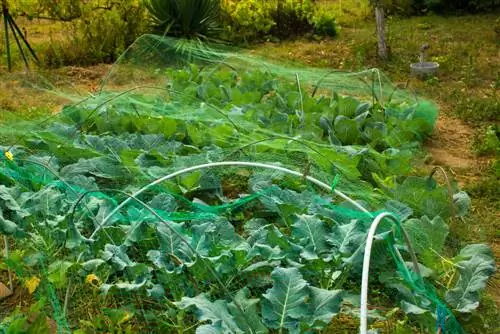- Author admin [email protected].
- Public 2023-12-16 16:46.
- Last modified 2025-01-23 11:19.
In spring at the latest, when the snow cover thaws and severe frosts are no longer expected, the time has come to prepare the vegetable patch for the next harvest season. But what work needs to be done and what garden tools are needed for it? You can find the answer to these questions in this article.

How to prepare the vegetable patch in spring?
To prepare the vegetable patch in spring, remove old plant material, loosen the soil with a digging fork and sow tooth, remove weeds and stones, and work compost and sand into the soil. Pay attention to crop rotation and plan flowering and herb plants.
Draw planting plan
It is recommended to draw a planting plan and divide the available area. According to the laws of crop rotation, a distinction is made between:
- Heavy eaters
- Middle eaters
- Weak eaters.
A small area of the vegetable garden should be reserved for flowering plants or herbs. These attract insects, which ensure good pollination of the vegetable plants and thus a higher crop yield.
Preparing the bed for sowing
If this has not already been done, old and non-rotted plant material is first removed. Now you need a digging fork (€139.00 on Amazon) and a sow tooth to loosen the top layer of soil that has been compacted by snow and frost:
- Work the soil thoroughly with the digging fork so that the soil is well aerated.
- The surface is then worked through again with the sow tooth, as seeds and cuttings only thrive in fine, crumbly soil.
In the course of this work, compost and, in the case of very heavy soils, sand are worked into the soil. Remove all weeds and stones, this will make later care noticeably easier.
When does green manure make sense?
You can sow green manure from March to October and prepare the vegetable garden for planting.
Green manure plants loosen even deep layers with their roots that extend deep into the soil. This makes the usual early digging unnecessary. After chopping off, you can leave the plants on the beds as a protective layer of mulch; they serve as food for earthworms and soil organisms.
This increases the amount of humus in the soil and allows it to store more water. The butterflies often contained in green manure mixtures enrich the soil with nitrogen, which is valuable for other plants, via their nodule bacteria.
Tip
Heavy digging in spring causes lasting damage to soil life. Therefore, loosen the soil carefully and fertilize with an organic fertilizer if necessary. A soil analysis is recommended, so you know exactly which nutrients are missing.






